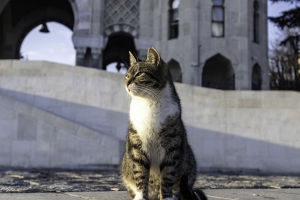Vultures are often misunderstood as passive scavengers, but these birds are equipped with remarkable fighting abilities that allow them to survive and thrive in competitive environments.
Their adaptations, both physical and behavioral, make them more formidable than they appear at first glance.
Vultures possess powerful beaks designed to tear through tough hides and sinew, a feature essential for scavenging but also effective in combat.
Their beaks are sharp and strong, capable of inflicting significant damage when defending themselves or competing for food. Unlike raptors such as eagles, vultures do not rely heavily on their talons for hunting, but their feet are still sturdy enough to grapple and assert dominance in skirmishes.
The size of many vulture species further enhances their fighting ability.
For instance, the lappet-faced vulture, one of the largest species, has a wingspan of nearly 10 feet and a robust body that can intimidate competitors. Their sheer presence can deter smaller scavengers, reducing the need for direct conflict.
Competition for food is intense among scavengers, and vultures often find themselves in disputes over carcasses.
Their aggression is evident in these scenarios, where they engage in displays of dominance and physical altercations to secure their share of the meal.
Larger species, such as the cinereous vulture, typically dominate smaller ones, using their size and strength to claim priority access.
Intra-species conflicts are also common, especially when resources are scarce. Vultures may use their beaks to peck and jab at rivals or spread their wings to appear larger and more intimidating.
These displays help establish a pecking order, reducing prolonged battles while ensuring that the strongest individuals secure their survival.
In addition to their offensive capabilities, vultures have unique defensive strategies. One of the most notable is their ability to regurgitate partially digested food when threatened.
This tactic serves multiple purposes: it repels attackers with its foul odor, lightens the vulture's body for a quicker escape, and distracts predators momentarily.
Their keen eyesight also provides an advantage, allowing them to spot potential threats from great distances. By staying vigilant, vultures can often avoid direct confrontations altogether, conserving energy for feeding and other survival needs.
The fighting ability of vultures is not just about self-preservation; it plays a vital role in maintaining ecological balance. By efficiently consuming carrion, vultures prevent the spread of diseases and ensure that nutrients are returned to the ecosystem.
Their ability to compete effectively at feeding sites ensures that they can perform this crucial role, even in the face of stiff competition from other scavengers.
Vultures may not be apex predators, but their fighting abilities are a testament to their resilience and adaptability.
Through a combination of physical strength, strategic aggression, and defensive tactics, these birds have carved out a niche as essential and formidable players in the natural world.
Far from being passive, vultures exemplify the strength needed to survive in harsh and competitive environments.


